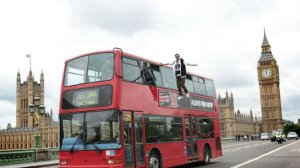Giulia Rozzi’s unhealthy relationship with credit cards started in college. Surrounded by friends with frivolous spending habits, Rozzi says she adopted the mindset of “spend now and deal with the consequences later.” That approach continued after graduation, when she moved to Los Angeles to pursue comedy and acting. Her cash flow was unsteady, but that didn’t stop her from using a credit card to bankroll a wealth of discretionary expenditures. A well-deserved pedicure? A fancy dress? A last-minute trip to Las Vegas with friends? All it took was one swipe of the credit card.
She hit a low point in 2004, having racked up $5,000 in credit card debt. Her parents agreed to pay it off – on the condition it wouldn’t happen again. “The agreement with them was I would never get another credit card, and of course, I did,” Rozzi says. Years later, when she found herself drowning in $20,000 in credit card debt, she decided it was time to give up plastic for good.
Rozzi is among a number of consumers who choose to live without credit cards. Some 29 percent of 1,004 respondents ages 18 years old or older to a 2010 poll by CreditCards.com said they did not own a credit card – around a 10 percent jump from the number of respondents who reported having no credit cards in 2009. For many people, saying goodbye to credit cards helps them stay out of debt and take more control of their finances.
Without thousands of dollars of credit at her disposal, Rozzi no longer makes purchases with money she doesn’t have. Today she pays for most items with cash and spends less. She says cash transactions make her think twice before making a purchase – significantly reducing her propensity for impulse purchases. A 2008 study led by Priya Raghubir, a professor of marketing at New York University, reinforced evidence from earlier studies that consumers tend to spend more money when paying with credit cards than they do when paying with cash.
Credit cards also alter a consumer’s mindset when contemplating a purchase. A 2012 study published in the Journal of Consumer Research found shoppers who charge an item to their credit card focus on the benefits of the purchase, while those who pay cash focus on the cost.
Consequently, many consumers who give up credit cards begin to pay closer attention to where their money is going and develop the discipline to spend less, says Gail Cunningham, vice president of membership and public relations at the National Foundation for Credit Counseling, a network of accredited and certified credit-counseling agencies. “Credit cards distance you from your hard-earned money,” Cunningham says. “We’ve found people who decide to live on a cash basis end up saving around 20 percent of their previous spending – and they do it without feeling deprived.”
However, those who go the credit card-free route may still encounter problems, including difficulties when booking hotels and renting vehicles. Such transactions typically require at least a debit card. “People who live in a cash-only world are going to find themselves marginalized and inconvenienced,” says Ben Woolsey, director of marketing and consumer research at CreditCards.com.
[Read: Financial Strategies for a Lifetime.]
Debit vs. credit card protections. Many credit experts, including Woolsey, advise credit card-free consumers to use a debit card that’s attached to a checking account so they can still make purchases without having to carry wads of cash.
But debit cards don’t offer the same protections as credit cards. The Fair Credit Bill Act covers consumers from fraudulent credit card charges. Consumers must submit a written dispute (some offer electronic submission) within 60 days after receiving an account statement that contains billing errors. The creditor will then investigate whether or not the charges are from a third party and decide if the money will be reimbursed to the consumer. The FCBA doesn’t cover debit card users, though. Instead, such consumers are liable for up to $50 of unauthorized charges if they report a lost or stolen debit card within two business days. If the report is filed after two business days, the cardholder is liable up to $500. And if unauthorized transactions aren’t reported within 60 days, the cardholder could be liable to pay the full amount.
Some banks, however, offer enhanced liability protection to debit card users, says Bruce McClary, a credit counselor at ClearPoint Credit Counseling Solutions, headquartered in Richmond, Va. For example, a creditor may not hold customers liable for fraudulent charges on their debit card if the dispute is reported within the first two business days. With financial institutions offering competitive features, McClary says consumers should shop before deciding where to open a debit card.
McClary recommends consumers regularly contribute to a savings account so they have an emergency fund in place if their debit card is compromised.
The disadvantages of closing all credit cards. Despite making it easier for some to climb out of debt, there are significant drawbacks to living without a credit card. With fewer avenues to build good credit, consumers may run into trouble when applying for a car loan or a home mortgage.
Woolsey of CreditCards.com says people with little or no credit history look riskier to lenders and may be offered car loans and home mortgages at higher interest rates – or may not qualify at all. “It’s almost like having no employment history or having been out of work for a long time,” Woolsey says, adding that a lack of credit history impairs your credibility as a trustworthy consumer. Closing a credit card account with no balance won’t ding your credit score, but the card history – including any missed payments – will remain on your credit report for about 10 years.
[See: 50 Smart Money Moves.]
Moreover, those who don’t use credit cards are still targeted by identity thieves. Fraudsters can use the consumer’s sensitive information to open a credit card in the victim’s name, for example, and accumulate debt on the card. Therefore, credit card-free consumers should check their credit report for errors. Americans are entitled to one free credit report a year at AnnualCreditReport.com. “If you take your eyes off your credit report for too long, you could be missing things that are challenging to repair,” McClary says.
One woman’s transition from credit to debit. JoAnneh Nagler of Burlingame, Calif., says making the transition from credit to debit-only living was challenging, especially since it was hard for her to admit she was in financial trouble. “I was around $80,000 in credit card debt before I woke up,” says Nagler, author of “The Debt-Free Spending Plan.” Her husband also had difficulty using credit cards responsibly; the couple divorced, partly due to their problems with credit card debt.
“I had fallen on my face so hard, so many times, that when I gave up my credit cards I was scared to do it because I didn’t know how I was going to live without them, but there’s never a good time to quit,” Nagler says. Fourteen years after the divorce, Nagler and her husband remarried. The couple signed a financial agreement – and had it notarized – swearing off all use of credit cards.
[Read: How One Woman Paid Off $80,000 in Credit Card Debt.]
Looking back on how she abused credit, Nagler says, “Other people have parents they can go to for large chunks of change, but that wasn’t a possibility for me, so I would say I used credit cards as my sugar daddy.”
The bottom line. Credit card-free living can have its ups and downs, but it enables many consumers to be more conscious of their spending, put more earnings into savings and stay out of trouble with creditors.




































